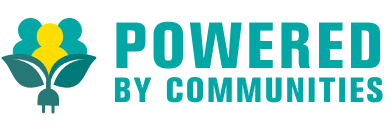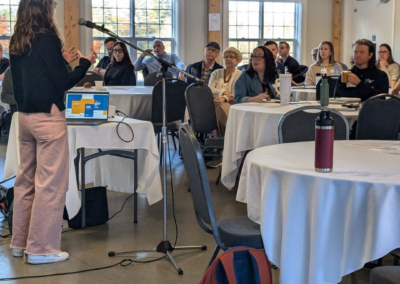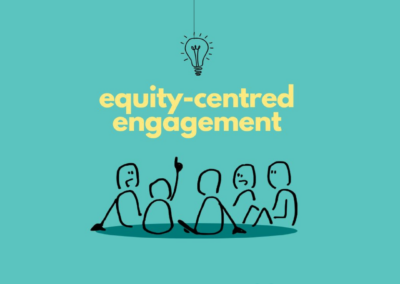Saint John: Achieving tons of savings while reducing tonnes of emissions
It’s almost impossible to not get enthused about energy efficiency when speaking with Samir Yammine. The City of Saint John’s Director of Asset Management and Environmental Performance has been working in that space for more than two decades, and it quickly becomes clear that every priority and action on his to-do list is assessed through the lenses of energy efficiency, cost savings and emission reduction.
“Our first project was back in 1997, when we received Environmental Trust funding to conduct early audits of city facilities,” he recalls. An arena was chosen as a pilot project, and it didn’t take long to discover significant savings potential for very little cost.
“We were able to reduce the arena’s energy bill by over 30 percent – and most of it was from really simple things like turning off motors that didn’t need to be running continuously, or programming thermostats so heating systems weren’t working after hours.”
Not surprisingly, that initial success piqued a lot of interest throughout City Hall, and started the energy efficiency snowball rolling. “As of today, we’ve undertaken more than 150 projects and saved literally millions of dollars,” he shares. Along the way, the city has also secured more than $40 million in grants and loans in support of those projects.
Several of those projects stand out as favourites.
“After the arena success, we examined our municipal operations complex.” Once again, considerable low-hanging fruit was discovered: notably, systems like air conditioning running unnecessarily 24 hours a day, and heating and cooling systems working against each other. “We installed our first control system in that building and achieved savings of 40-45 percent – mostly as a result of that one simple upgrade!”
Another favourite project was the 2013 construction of Saint John’s new police headquarters, the city’s first building to be certified LEED Gold. “We used an integrated design approach,” Yammine shares. “We set our goals for the building, and then got everyone involved in achieving them: the architects, the engineers, the contractors, the accountants – and even the building operators, who we’ve learned are absolutely critical to realizing our savings targets.”
The end result? “This is one of the best buildings I’ve ever been involved with,” Yammine smiles. “It was smooth sailing from planning to commissioning, and its energy usage per square foot is unbelievably low. Plus, we’ve been amazed by the other benefits the building offers – things like superb indoor air quality and occupant comfort.”
He’s excited about another project on his priority list: overseeing the installation of a district energy system in the uptown area. “We’ll be using heat pumps to capture waste heat from the Market Square complex and then use it in the nearby Canada Games Aquatic Center to help heat the building, the pool and domestic hot water.” It’s estimated that this system could reduce the Aquatic Center’s natural gas consumption by as much as 85 percent.

No doubt in part due to past successes, a culture of sustainability has taken root across Saint John. The city’s Community Energy Action Plan, developed by a committee of about 20 community stakeholders under the guidance of a consultant, was passed by City Council in January. It maps out a course to net-zero emissions by 2050, including actions and measurables in six key areas:
- Decarbonizing industry
- Increasing use of active and public transportation
- Shifting to low-emission vehicles and transport fuels
- Electrifying and improving energy efficiency in buildings
- Generating renewable energy
- Reducing waste
An Advisory Committee of community stakeholders is being set up to oversee implementation of the plan.
Saint John has been a member of the Federation of Canadian Municipalities’ Partners for Climate Protection (PCP) Program since 2000, and started working with QUEST the same year. Corporate baseline emissions were determined in 2015, and emissions reduction targets were established in 2017. The first target – a 30 percent reduction by 2025 – was actually achieved in 2023, two years ahead of schedule. The next goal on the horizon is carbon neutrality by 2040.
Yammine contemplates some of the key actions achieving that goal will require. “Transportation represents about 30 percent of our emissions, so we need to tackle that.” Saint John Transit, a key stakeholder, has developed a roadmap to 2040 that includes electrification and rightsizing of vehicles. Its new FLEX transit-on-demand service, provided by efficient, 6-passenger electric buses, is going well, and a full-size electric bus is currently being piloted.
“We also need to convert some of the city’s thermal systems from fossil fuels to electricity,” Yammine adds, “and then get that power from clean sources.”
Saint John Energy, the city’s electric utility, is on board and on track in helping achieve that goal. In 2023, the utility unveiled its ambitious Zero30 strategy – aiming to be carbon-neutral by 2030, fully five years ahead of federal targets. Key pillars of Zero30 include:
- Planning for greater demand as transportation and heating loads are electrified;
- Working with NB Power and other partners to source more power from non-emitting sources like hydro, solar and the nearby Burchill Wind Farm, which was commissioned in 2023 and provides 15 percent of the city’s power;
- Adopting smart grid technology to facilitate greater integration of grid-scale, residential and electric vehicle batteries; and,
- Then closing whatever gap remains with renewable energy certificates or carbon credits.
Saint John Energy’s President Ryan Mitchell has been instrumental in developing and promoting Zero30. “Reducing emissions is a collective responsibility, so we need to do our part,” he says. “But as a utility we also need to keep energy costs affordable for our customers. Our Zero30 strategy shows we can do both.”
“It’s gratifying to see that residents are on board too,” adds Glen Fillmore, the utility’s Executive Director of Strategic Growth and Transformation. Saint John Energy led the country in customer satisfaction last year, and a recent survey found 95 percent support for more renewables. “When you connect to people’s core values and what matters most, you win people over pretty quickly.”
Yammine’s advice to other communities just beginning their sustainability journeys?
“Start by looking for the low-hanging fruit,” he suggests. “Areas where significant savings can be realized with little to no capital cost: habit changes; turning things off when they don’t need to be on; or, installing basic controls like timers and programmable thermostats. Then identify and implement efficiency upgrades in accordance with their payback.”
Yammine is quick to repeat that engaging people is critical to success. “On the corporate side, we’ve been successful because we’ve learned that we need to involve every stakeholder from the start. If we can do that on the corporate side, why not on the community side too?”
And what about overcoming resistance to change? “Change is good,” he smiles. “It brings us closer to perfect.”
ABOUT THE AUTHOR

Carl Duivenvoorden

About Powered by Communities
Established in 2017, Powered by Communities is an awareness-raising, communications and media platform that highlights and celebrates local community energy initiatives taking place across the country, from coast to coast to coast. The platform inspires, informs and engages its readership with stories and articles detailing community energy initiatives being led by local governments, municipalities, Indigenous communities, community groups, non-profits, charities, and enterprising individuals.

About QUEST Canada
QUEST Canada is a registered Canadian charity that supports communities in Canada on their pathway to net-zero. Since 2007, we’ve been facilitating connections, empowering community champions and advising decision-makers to implement energy use and emissions reduction solutions that best meet community needs and maximize local opportunities. We develop tools and resources, convene stakeholders and rights holders, and advise decision-makers — all with the goal of encouraging, assisting and enabling communities to contribute to Canada’s net-zero goals.

Support local communities by sharing this story
MORE FROM POWERED BY COMMUNITIES
Sign Up
Join the Conversation!
Sign up to get the latest news and updates about QUEST Canada events and receive QUEST Canada's monthly newsletter.




